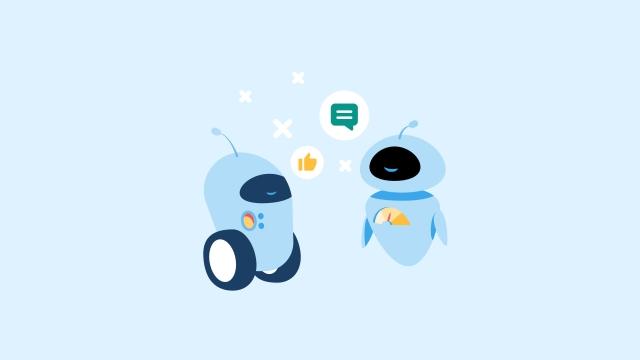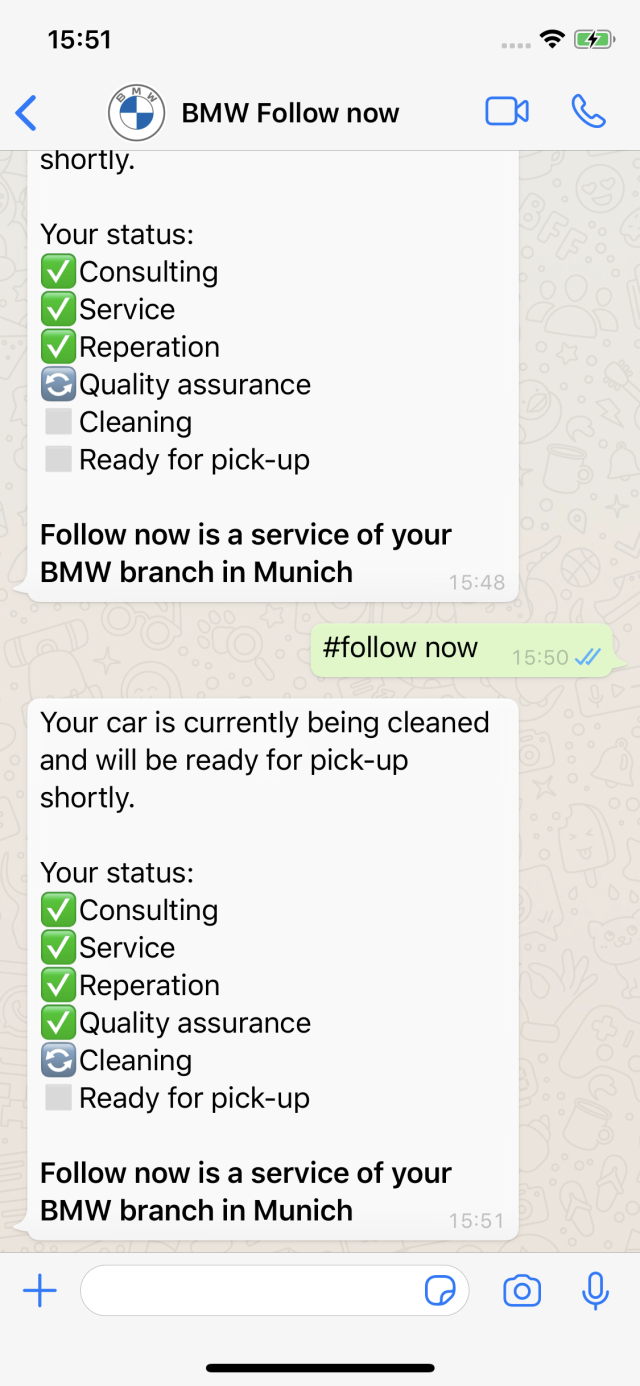There is a lot of talk around chatbots, as they are revolutionary in communication. But what types of chatbots actually exist? In this article, we'll introduce you to the different types of chatbots and show you the most important areas of use for them, as well as best cases.
When it comes to the different types of chatbots, experts typically distinguish between three types: rule-based bots, bots with artificial intelligence (AI bots), and application-oriented bots that combine both rule-based and intelligent dialogue systems. In this guide, we'll explore the differences, use cases, and show you, how companies use different bots.
What are the different types of chatbots?
Chatbots are automated dialogues. One of the biggest advantages of the technology is that chatbots can be extremely successful in customer service for companies. They are not limited to that, though! They have similar potential for the entire field of digital communication, depending on what type of chatbot you use.
Fundamentally, there are different types of chatbots. As a general rule, you can distinguish between two types of chatbots: rule-based chatbots and AI bots.
Rule-based chatbots (click bots)
The frequently used rule-based chatbots (also known as click bots) are based on predefined conversational paths, for instance, where users get predefined question and answer options. If a user tries to ask questions outside these pre-designed questions, the bot cannot answer them.
This is why it's important to design the rule-based chatbot in a versatile way. Different media formats such as images, GIFs, audios, and videos can help. Also, a personal approach (requires the prior request of the name or first name) and different response options improve the experience. Rule-based bots are quickly designed, implemented and inexpensive.
Chatbots with artificial intelligence (AI bots)
Chatbots with artificial intelligence are able to conduct intelligent conversations with customers. The basis for this is their AI capability and, subordinately, so-called machine learning (ML) and natural language processing (NLP).
AI
Artificial intelligence allows machines to simulate human intelligence and is an umbrella term. AI is now an essential component in almost all apps we use in everyday life. Netflix uses AI to suggest movies that match your preferences, Spotify shows us songs based on our playlists, and YouTube can already guess which new videos might interest you based on your history.
NLP
Natural Language Processing enables machines to understand or translate human speech. They can assign a meaning to the written or spoken word and, for example, provide grammatically correct translations or extract keywords. A good example is the spam filter, which reads the subject line of your e-mails and decides whether a mail belongs in the spam folder.
ML
Machine learning (or deep learning) enables an AI to recognize patterns in data sets. This allows it, as the name indicates, to learn on its own and improve continuously .
Today's (basically) unbeatable chess bots, for example, play through millions of games and can use ML and data from previous games to learn which moves are strong or weak. The last recorded victory by a human against a chess AI was in 2005.
An AI bot is able to incorporate the context of the user's input and respond to it appropriately in the chat. Thus, the user can converse with the bot in a natural, conversational style. In addition, the bot is capable of constantly learning from user feedback and the dialogues that have already taken place, and constantly improve the quality of its responses.
Previously found mainly at large companies, bots with artificial intelligence have now also arrived at medium-sized companies. With the AI-based chatbots from Chatlayer by Sinch, for example, companies can automate their customer communication in an AI-driven way. With over 125 languages, these smart bots can cover large parts of the world and many use cases.
Application-oriented chatbots
The application-oriented chatbots are hybrids that combine rule-based and intelligent conversational systems.
Use cases for chatbots
As mentioned, experts classify bots into two types, AI bots or FAQ bots. However, it must be taken into account that this is a purely technical view. This binary distinction doesn't really do justice to the versatile use of chatbots.
For companies, it can be therefore more interesting to look at the different use cases for chatbots.
Consulting and service bot
A relatively simple assistant can already come in very handy in first-level support. It can, for example, directly answer recurring questions from customers. For more complex questions, the first-level support chatbot can still help find out what kind of problem needs to be solved, and then assign the customer to the right agent. As simple as this sounds, it can have a huge impact on the quality of your service, and the workload of your team. This has also been the experience of David Kurzman, CEO and co-founder of the sports brand Women's Best.
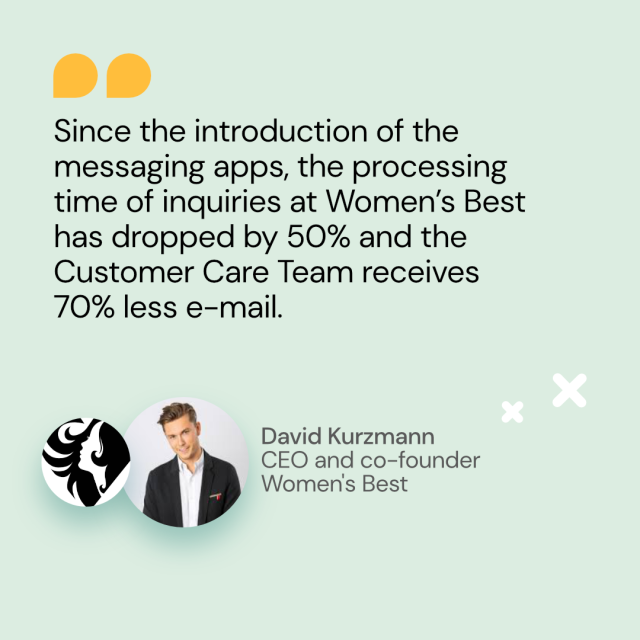
Women's Best is an online store offering apparel and nutrition for female fitness enthusiasts. This example shows that with its customer service via WhatsApp Business, the international e-commerce company has been able to reduce the average turnaround time of customer inquiries by more than 50 percent and offers twice as fast service as before.
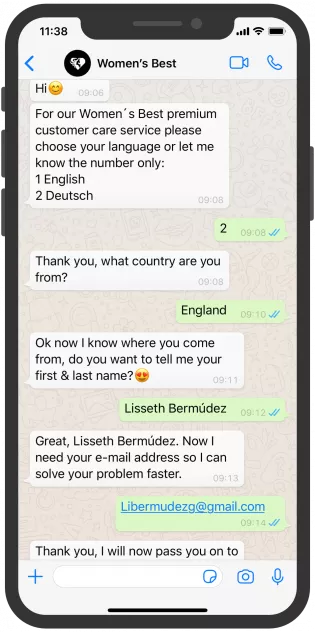
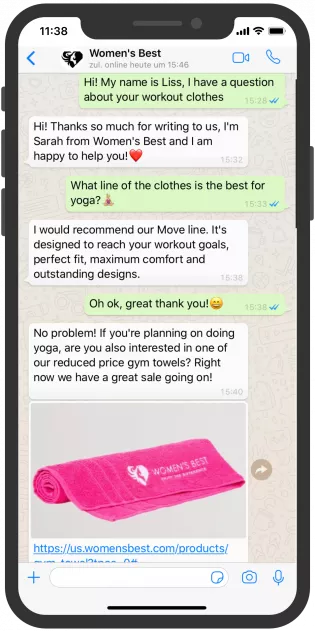
2.2 Gamification chatbots
These types of chatbots work much like computer games from the 1990s. With the help of questions and answers, together with the user, the chatbot works its way towards a goal.
For example, the Healthy Indian Project, for example, uses a Whatsapp chatbot to engage users in a quiz. The bot asks users health questions, and thus educates the audience on important health topics.
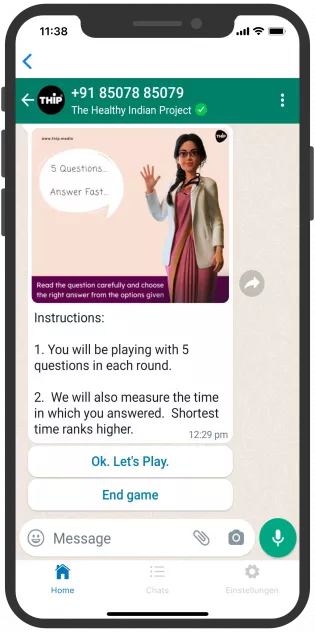
Another good example is a chatbot, that helps new employees to get familiar with their new employer via Quiz. The questions are designed to educate the user about the history and products of the company.
Bots that inspire
These virtual assistants help users with specific questions on a topic. For example, the chatbot from German food magazine Lecker offers numerous suggestions on the subject of cooking and baking. You can ask for recipes and (usually) get suitable answers. The chatbot from Lecker also provides daily inspiration for the next meal.
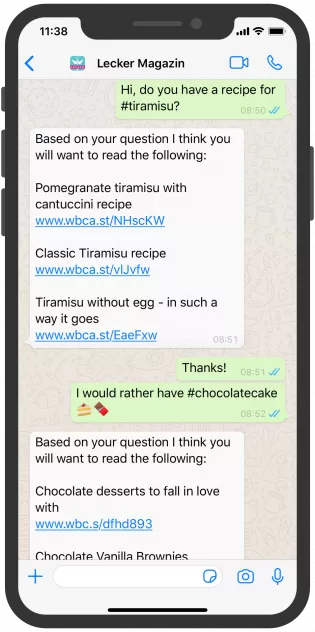
Information bots
The most widespread and successful virtual assistants at the moment are certainly the info chatbots. These inform you regularly about certain topics based on defined parameters such as time, location, and content preference. The chatbot from the Spanish e-mobility start-up GOMEEP works as an FAQ bot and answers the most common user questions.

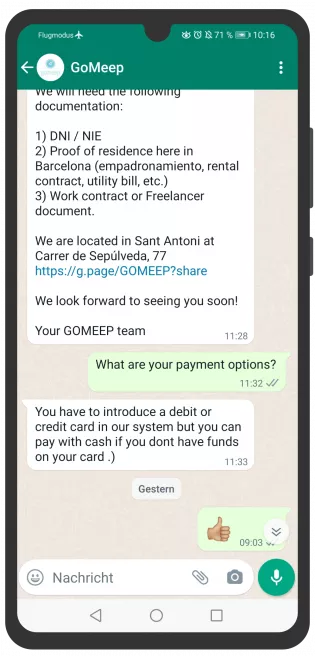
Chatbots for education
Educational chatbots is another interesting use case for automation. They make learning easy, scalable, and add a gamification factor to it that makes it more engaging for users.
Digify Africa, a youth-led digital education organization from South Africa demonstrates, that many users are very open to educational chatbots. Digify Africa focuses on educating users about the digital world. As most of their customers live in Africa, where mobile internet usage is far more widespread than desktop internet, it made sense for the company to launch WhatsApp bots.
One of them was Naledi, a digital marketing learning chatbot helping young people and entrepreneurs to learn how to market themselves or their business on the internet and on social media.
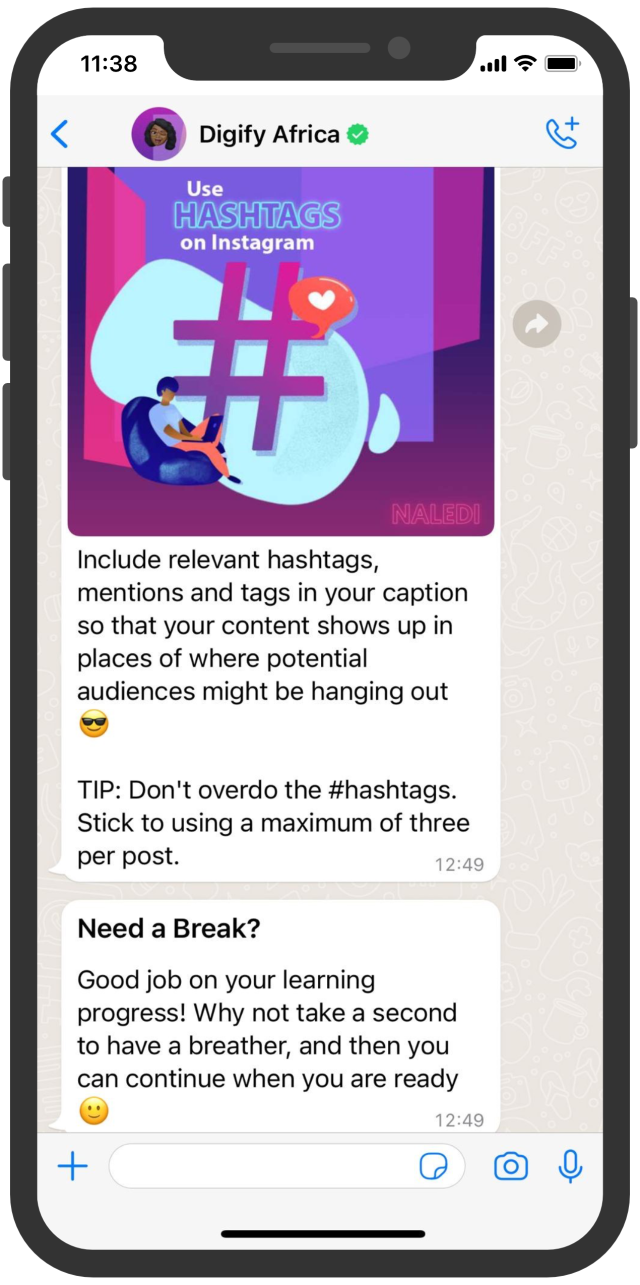
The results of Digify Africa's chatbots were impressive. They were able to increase registrations, reach more users, and get more learners to complete their courses.
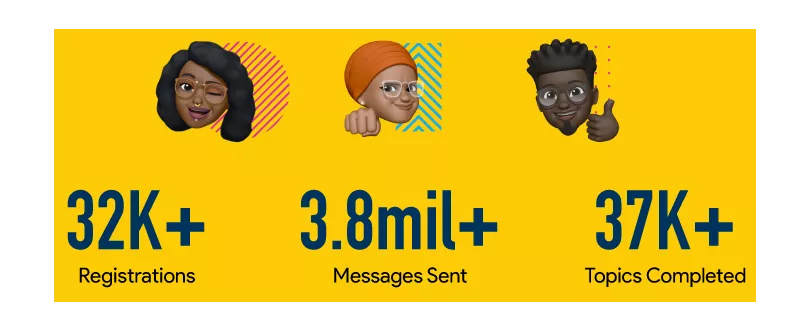
Areas of application of chatbots
Wherever companies have a touchpoint with customers, be it assistance in the store, a service hotline or via mail and social media – a virtual assistant can take over simple or complex tasks. In fact, chatbots can be used in all areas of communication, such as:
- consulting
- e-commerce
- online marketing
- financial services
- health
- news
- e-learning
- customer support
- information
- ...
Many companies use chatbots in three main areas: marketing, consulting and service and HR.
Marketing
SportSpar: a chatbot on Telegram, the hot messaging app
SportSpar is a sporting goods retailer that sells high-quality branded products with discounted prices.
Due to the high demand for information and the fast-moving nature of their deals, SportSpar decided very early on to use Telegram as a marketing channel.
On Telegram, the company sends notifications about the latest deals. In addition, they also use a FAQ chatbot on Telegram to answer frequent questions from customers in an automated way, thus relieving the support staff.
Consulting and service
BMW: FollowNow chatbot offers customers real-time service on the repair status of their car
BMW's service center uses a the chatbot to enable customers to find out about the repair status of their car at any time. The WhatsApp not only gives immediate status updates to customers, the bot also relieves the customer service in first level support, and, thus, gives them more time for more complex customer inquiries.
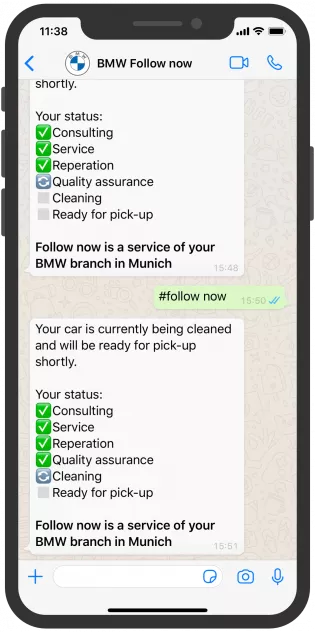
The range of services offered by the FollowNow chatbot includes not only the prequalification of customer inquiries, but also appointment scheduling. In the meantime, many customers use this option and abandon phone calls, which massively relieves the customer service. With the help of the bot, BMW was able to reduce the number of calls by 60%.
HR
AZUBIYO: Job offers via WhatsApp
HR chatbots can be very useful, as the user does not need to look for the job actively, but gets fitting job offers via messaging app. The automation helps applicants to find and apply for suitable jobs faster and companies can fill empty positions sooner, a big advantage in today's competitive job market.
AZUBIYO, for example, is a job platform for entry-level positions. People searching for jobs, can subscribe to their WhatsApp service, and receive automated job alerts powered by a chatbot. The chatbot sends users the job title, name of the company, a suitability score for their profile, and a link to the full job description.
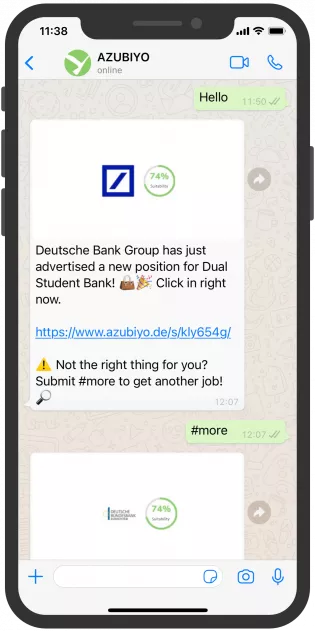
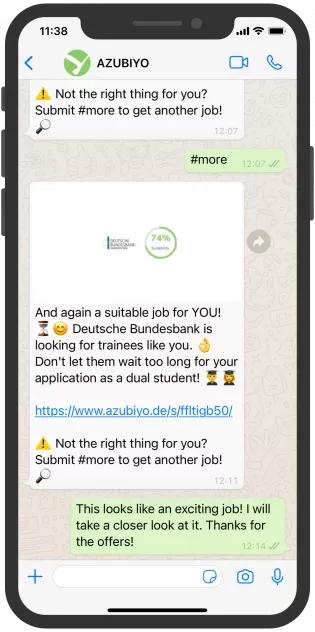
This makes it easier for companies and applicants to come together.
What to keep in mind when planning your bot.
Developers and communication managers should take sufficient time, especially in the consultation phase, to clarify the following points:
- What goal should a (marketing) chatbot have?
- How can the bot achieve this goal?
- What personality should the bot have?
- What's the right tone of voice?
- What are the topics the bot should cover?
- Do I want to offer a guided or free conversation?
- How do I design a valuable conversation?
- How do I respond to questions that my chatbot can't answer?
- Do I need a simple FAQ bot or a chatbot for a more complex environment?
💡 Tip: Try out Sinch Engage, a platform where you can build your own chatbot in minutes (no coding skills required!)
Common bot design mistakes
Of course, not all chatbots will work wonders. But to avoid common rookie mistakes, take a closer look at this list below, to make sure hat your chatbot will actually help your users. They show the most common chatbot design flaws that you should try to avoid.
- Your chatbot doesn't understand the questions or has very limited access to answers (data). This makes for a terrible bot experience or users. Make sure to set up your bot in a way that it can answer questions.
- There is no handover protocol. For some apps, like WhatsApp, it's required to have a handover procedure from bot to human agent. However, it always makes sense to set up a handover process that leads customers to human agents that can help them tackle more complex issues.
- The chatbot is more like a computer game – but doesn't answer questions about brand products or services. That's maybe fun, but if users interact with your bot to solve their issues they'll end up frustrated.
- The dialog only follows rigid patterns, but cannot do anything with differently asked questions or comments, and is then stuck in an endless loop. Find happy flows that will smoothly allow your bot to ask for more information in different ways.
- Your chatbot has no personality – it answers dully and inflexibly like a machine. That's neither the best customer experience, nor the best impression for your brand.
- Your campaign does something, but forgets to generate real added value for the user or customer in relation to the company. The bot does not answer important questions about the company or product. Think about ways your bot can lead customers on in their customer journey, for example by adding useful links where they can find more information.
How to get more people to use your chatbot
Many projects with virtual assistants are discontinued after some time because they weren't successful. In most cases, however, it's probably more likely that the company committed one of the mentioned mistakes when launching a chatbot. So take your time in defining goals, setting up and testing your bot, and choosing the best platform.
There are also ways to get customers more excited about your bot. Promote your chatbot via social media, website, and newsletters. You can use click-to-chat ads on social media to direct customers to your chatbot in one click. It's also critical to prominently place buttons or your phone number on your website to increase visibility.
Conclusion
There are many types of chatbots or virtual assistants. From a company perspective, we recommend differentiating the types of bots according to use cases from the user's point of view rather than based on technical differences. It's particularly important to think about what the bot must be able to do and, above all, what the user expects from the company (for which the chatbot "speaks"). That's how you'll turn your chatbot project into a success!
